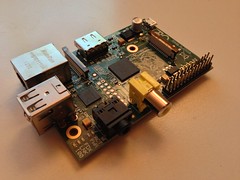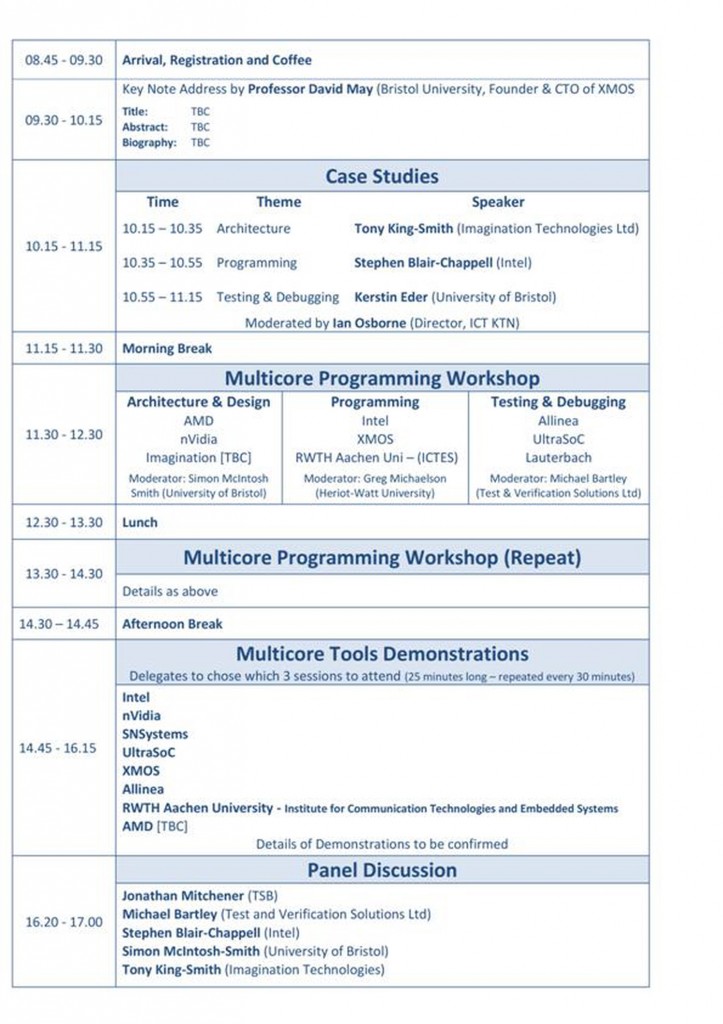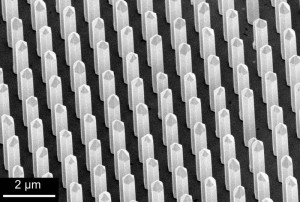Bristol wins £3m ‘second prize’ for Future City development
While Bristol lost out to Glasgow for the Future City demonstrator project, the TSB judges rated the city’s bid very highly, so much so that they have awarded a £3m ‘runners-up’ prize.
“While there is some disappointment that we did not gain the main prize, Bristol is now the only city in the UK to have won funding from Government to be both a Super Connected City and a Future City.” said Mayor George Ferguson. “Bringing these awards together gives us a pot of nearly £15m with which we can move really quickly to lever-in additional funding and support from business to help deliver our plans.”
“We are fast becoming the UK’s creative capital, a city of experimentation and a city that offers a warm welcome,” he said. “Our achievement in beating more than 30 other cities to win government funding for Future Cities is testament to our ambitions and our strong partnership approach with both the city’s universities, businesses and partners such as Watershed and Knowle West Media Centre.”
A round up of the tech news from the Bristol and Bath region is in February edition of the the new LEP High Tech newsletter
Related articles
£600m science and technology opportunities for SW region
The UK government has detailed funding to boost its vision of science and technology, with the South West seeing significant opportunities.
The key investment is £189 million for big data and energy efficient computing to build on the research base’s capacity for analysing big data sets, in areas like earth observation and medical science, but there are other significant areas of funding.
There is a £35 million for centres of excellence in robotics and autonomous systems aiming to bring together the research base and industry. The Bristol Robotics Lab is the largest in Europe and at the forefront of such developments. Science and universities minister David Willetts (right) also announced a £1m Technology Strategy Board competition to help to accelerate the development of concepts where robots are able to interact with each other and humans.
There will also be £25 million of additional funding for the National Space Technology Programme for the development of commercial products and services using space technology and data from space-based systems which can benefit space technology companies in the region such as SciSys in Bristol.
There is also £45 million for new facilities and equipment for advanced materials research in areas of UK strength such as advanced composites, high-performance alloys, low-energy electronics and telecommunications, as well as £28 million to the National Composites Centre in Bristol.
In newer areas such as smart grid, the government plans to invest £30 million to create dedicated R&D facilities to develop and test new grid scale storage technologies, an area where the region is strong withthe Low Carbon South West group.
Related articles
South West research universities team up in new GW4 group
The Universities of Bath, Bristol, Cardiff and Exeter today announced a formal collaboration, to boost research expertise and capability in the South West of England and Wales.
The collaboration will explore and identify opportunities for combined research to address global challenges, while also maximising the impact of and return on investment from research funding.
The group of four research intensive universities, each of which have significant research capabilities and which represent a total turnover in excess of £1,300 million, will be known as the GW4. There are already strong partnerships across the four institutions and the collaboration seeks to build on these.
Professor Eric Thomas, Vice-Chancellor of the University of Bristol, said: “Regional groupings of research intensive universities are a rapidly emerging and important evolution, enabling the sharing of research infrastructure and the identification of thematic areas of expertise. These will be increasingly important in order for universities to address grand intellectual and societal challenges.”
Professor Dame Glynis Breakwell, Vice Chancellor of the University of Bath, said: “The collective strength of the new grouping is much more than the sum of its individual parts. Taken together, the breadth and depth of our research expertise is truly impressive providing a powerful new contender in the increasingly intense competition for research funding on both the national and international level.”
Cardiff University’s Vice-Chancellor, Professor Colin Riordan, said: “We want to enhance Cardiff’s world-leading research and reputation by creating a critical mass of research excellence with other UK universities. In a competitive higher education sector we need to find new ways for Wales to compete for research income.
“Working in collaboration with fellow research-intensive Universities will help us to succeed in research and tackle some of society’s biggest research challenges. Critical mass is the key to success and the combined research excellence of Bath, Bristol, Cardiff and Exeter will give Cardiff – and Wales – a new and competitive edge that will place us at the forefront not only in the UK, but internationally.”
Professor Sir Steve Smith, Vice-Chancellor of the University of Exeter, said: “This is a vital development for ensuring the growth and development of world class research in the South West and Wales. It gives us the critical mass and the quality to succeed in an increasingly competitive and research-intensive environment. The four universities already have a strong tradition of working together and GW4 will take that collaboration to a new level.”
Related articles
Bristol ‘too affluent’ for smart city cash
Bristol has lost out to Glasgow for the £24m Future City demonstrator, with the affluence of the region being a key factor.
“Glasgow has some quite extreme challenges – it has the lowest life expectancy of any city in the UK for instance – and the hope is that if we bring together energy, transport, public safety and health it will make it more efficient and a better place to live,” said Scott Cain, the TSB’s project leader for Future Cities, talking to the BBC.
That view was backed up by Universities and Science Minister David Willetts. “With more people than ever before living in our cities, they need to be able to provide people with a better quality of life and a thriving economy,” he said. “From transport systems to energy use and health, this demonstrator will play a key part in the government’s industrial strategy and give real insight into how our cities can be shaped in the future,” he added.
£300,000 from the EU for two projects as part of its Smart City Programme.
“Industry expectations have been overturned throughout this competition, and this result, too, will surprise many,” said Joe Dignan, Chief analyst for European Public Sector at market researcher Ovum. Initially, the smart money was on Bristol, Birmingham, Leeds + Bradford or Manchester to scoop the prize, given their level of preparation. However, only Bristol joined the shortlist alongside Glasgow, Peterborough and London. Peterborough was considered the wild card, while most felt London had already been given more than its fair share of the public purse in the lead up to the Olympics.
“Glasgow’s success reflects a global trend in the development of future cities being presaged by a major global event. Although it was considered the outsider in this race, its preparation for the 2014 Commonwealth Games was the catalyst to get the right people around the table to look at the performance of the city as a whole,” he added. ” There is no doubt that the judging process was objective and Glasgow’s bid excellent, but one can be sure that Westminster is happy to show its commitment to Scotland at the current time.”
The demonstrator will include better services for Glaswegians, with real-time information about traffic and apps to check that buses and trains are on time. The council will also create an app for reporting issues such as potholes and missing bin collections.
It will use analytical software and security cameras to help identify and prevent crime in the city and monitor energy levels to find new ways of providing gas and electricity to poorer areas where fuel poverty is a big issue.
G
Related articles
Street furniture comes alive in Bristol in world’s first digital playground
Lamp posts, bus stops and post boxes will soon play an even more important role in how Bristol operates as the result of a £30,000 award which will change the way people interact with the city.
The Watershed has announced Hello Lamp Post! as the winner of Bristol’s first ever Playable City Award, which attracted 93 entries from around the world.
The new art and technology project invites audiences to tune in to the secret conversations of the city and communicate through lamp posts, bus stops, post boxes and other street furniture this summer. Part game, part story, anyone can play by texting in a unique code found on the city’s familiar street objects.
“Hello Lamp Post! is hugely exciting and the University is pleased to support this fantastic initiative which supports Bristol’s rightful place on the global cultural map,” said David Alder, Director of Marketing and Communications at the University of Bristol
Lamp posts, bus stops and post boxes are the goosebumps of the city and so ubiquitous that they have become invisible. The ‘smart city’ approach is to augment them with technologies like digital displays, but Hello Lamp Post! seeks instead to make them playable, using existing city infrastructure to make an open, hospitable and playful experience which encourages people to notice and interact with what is around them.
The project will utilise the codes that city councils and public servants use to tell one object from another when a light bulb needs changing or a bus stop is in need of repair. For the first time, city dwellers will be able to use these codes too in order to play a game and tell a story.
The £30,000 commission seeks to create an original, future-facing work, which uses creative technology to explore the theme of the playable city and is supported by a network of organisations who exemplify Bristol’s strength in creative technologies, including the University of Bristol which acts as a partner and ambassador for the project.
Related articles
Bristol shortlists ten ideas for world’s first digital playground
-
 A series of 3D scanning booths scattered throughout the city. Scan your body and see it play in the city’s augmented reality museum of life.
A series of 3D scanning booths scattered throughout the city. Scan your body and see it play in the city’s augmented reality museum of life. -
 Inviting the residents of Bristol to rediscover their spirit of playfulness. By bursting some balloons.
Inviting the residents of Bristol to rediscover their spirit of playfulness. By bursting some balloons. -
 An interactive pavilion, constructed using 3D scans of personal objects provided by the public, representing the different relationships people have with the city.
An interactive pavilion, constructed using 3D scans of personal objects provided by the public, representing the different relationships people have with the city. -
 Tumbling out of a tip-up truck comes huge building blocks, all colours and shapes. Build your dream city, knock it down, and then build it again.
Tumbling out of a tip-up truck comes huge building blocks, all colours and shapes. Build your dream city, knock it down, and then build it again. -
 The city is waking up. Lamp posts, bus stops, post boxes and more: all are rising from their slumber. They have questions, and they need answers.
The city is waking up. Lamp posts, bus stops, post boxes and more: all are rising from their slumber. They have questions, and they need answers. -
 An ‘album’ installed in a series of spaces throughout the city. Part light installation, part musical performance and part generative interface.
An ‘album’ installed in a series of spaces throughout the city. Part light installation, part musical performance and part generative interface. -
 Explore Bristol while solving a murder mystery – even on rainy days. All you need is a Jolly Brolly, a clever umbrella that serves as your game assistant and guide.
Explore Bristol while solving a murder mystery – even on rainy days. All you need is a Jolly Brolly, a clever umbrella that serves as your game assistant and guide. -
 A network of lightweight, robust digital screens situated around Bristol inviting passers-by to get involved and play.
A network of lightweight, robust digital screens situated around Bristol inviting passers-by to get involved and play. -
 A street game that blends public space, collaboration and a swarm of little wheeled robots.
A street game that blends public space, collaboration and a swarm of little wheeled robots. -
 Digital songbirds are placed in trees, rooftops, alleys. Tweet them and hear your messages as beautiful bird song.
Digital songbirds are placed in trees, rooftops, alleys. Tweet them and hear your messages as beautiful bird song.
Raspberry Pi stimulates computing for kids in Bristol
One of the team behind the Raspberry Pi £25 computer is coming to @Bristol tomorrow evening to talk to kids in the region.
The Bristol chapter of the British Computing Society has invited Rob Bishop, 22, from the Raspberry Pi Foundation in Cambridge to talk about the joy of making and using the Raspberry Pi. Rob will discuss how he got involved in the project as an intern at Broadcom (which has a development centre in Bristol as well as Cambridge) and why a career in engineering or computer science is awesome (and important!). There will also be a chance to get hands-on with a Raspberry Pi and to ask him any technical or non-technical questions you might have about engineering, computer science and the Raspberry Pi.
The talk will be followed by an opportunity for a Q&A alongside some demonstrations of how the Raspberry Pi can be used.
Rob Bishop is a Developer, Product Engineer & Evangelist for Raspberry Pi Foundation, one of the earliest engineers involved with the development of the Raspberry Pi and currently the only full-time paid employee in the Foundation.
The event starts at 1800 with the chance to have a look around @Bristol followed by the talk starting at 19:00.
Both BCS Members and Non Members are welcome – tickets are nearly sold out at bcsbristolraspberry.eventbrite.co.uk/
If you require any more information please contact simon.thorp@bcs.org
You can buy the Raspberry Pi at http://uk.farnell.com/raspberry-pi?CMP=KNC-GUK-FUK-GEN-KWL
Related articles
Bristol shortlisted for £24m Future City demonstrator project
Proposals from four cities including Bristol have been shortlisted for final interview as the Technology Strategy Board’s £24 million Future Cities Demonstrator competition nears conclusion. The interviews are tomorrow (5th december) with the announcement of the winner in January 2013.
30 Local Authorities were awarded grants of £50,000 in July 2012 to develop feasibility studies and 26 submitted project proposals by the 14 November 2012 deadline. The feasibility studies will be made public in due course as part of the competition process.
The four shortlisted project proposals are (in alphabetical order);
- Bristol
- Glasgow
- London
- Peterborough
The Technology Strategy Board is keen to build upon the involvement of all the Local Authorities in the process, and aim to continue working together. It says it will explore further opportunities to collaborate and develop the ideas and themes addressed in the applications, for example through the development of the Future Cities Catapult centre due to open next year.
Bristol’s Future City bid brings together many of the strengths of the region, from the microelectronics cluster with global expertise in microcontrollers, wireless technology and sensors for the Internet of Things, as well as robotics and smart meters, advanced materials from the aerospace cluster, low carbon and renewable energy innovations in building technology and new digital content from the creative sector.
Related articles
RoboWorldCup comes to UK for the first time in Bristol
FIRA’s World Cup of Robotics is coming to the UK for the first time from 20 to 25 August, hosted by the Bristol Robotics Lab (BRL) and @Bristol. A total of 27 teams will be competing, with 202 participants from across the world coming to pit their robotic skills against each other.
Competitors are coming from as far afield as Mexico, Canada, India, China, South Korea, Malaysia and Taiwan. The UK has two teams competing – one from the BRL and the second from the University of Plymouth. Hundreds of spectators are expected to watch the events unfold in @Bristol, one of the UK’s leading science and discovery centres, as top roboticists test their newest technology and hope to finish on the podium. The most highly-anticipated category is for humanoid robots which can walk and run. ‘HuroCup’ events include football, basketball, wall climbing, weightlifting and marathon running. These robots can be up to 130cm in height and weigh up to 30kg.
Other categories include ‘MiroSot’ – a five or 11-a-side football game for wheeled robots. An external vision system tracks the position of the robots and the ball, relaying this information to another computer which then calculates the next move. While it’s not quite as fast-paced as events in the Olympic Stadium, organisers promise that it will be a spectacle in its own right as spectators marvel at pioneering mechanical, electronic and advanced artificial intelligence technology in action.
Dr Guido Herrmann, from the University of Bristol, led the BRL bid and hopes members of the public will make the most of the opportunity to see world-leading robotics on their doorstep for free. He said: “We are looking forward to welcoming teams from around the world to Bristol. The competition promises to be both exciting and insightful, pushing the boundaries of robotics to the limit. This will be a fantastic opportunity for the public to see just what autonomous robots are capable of. Although very different to the Olympics, it’s another opportunity to show the world just what Great Britain is capable of – both as event hosts and being pioneers of engineering.”
A major scientific conference, the 2012 Joint FIRA-TAROS Congress, will run alongside the tournament, bringing together the world’s leading experts in robotics. The TAROS Industry Day will also be held at BRL on the Frenchay Campus of UWE Bristol on 23 August, with talks by key robotics industry figures and exhibitors from leading companies.
The event is organised with UK’s Knowledge Transfer Networks (KTN) on Robotics and the British Automation & Robot Association (BARA). Members of the public are invited to a public lecture which takes place on Tuesday, 21 August, at 7pm in the Wills Memorial Building. Professor Shuzhi Sam Ge, from The National University of Singapore and the University of Electronic Science and Technology of China, will discuss the ‘Era of Social Robotics’ and how social robots might one day be able to improve services, healthcare and productivity. Professor Jong-Hwan Kim, President of FIRA, said: “It is my great pleasure to have FIRA RoboWorld Cup and the joint FIRA-TAROS Congress held in the UK for the first time, especially as it’s the birthplace of modern football. Football has created a unique culture and I believe that robot sport can contribute to the future of technology through encouraging young scientists and engineers to get together during the event and share ideas to advance robotics.”
The public are welcome to enjoy the action from Wednesday, 22 August to Saturday, 25 August. For details of the schedule, please see the At-Bristol website. Entry to the RoboWorld Cup is free. The event has been sponsored by The Institution of Engineering Technology (IET), The Office of Naval Research Global (ONRG), Regional Educational Legacy in Arts and Youth Sport (RELAYS), Team South West, The Institution of Mechanical Engineers (IMechE) and Maxon Motor UK.
Related articles
Leading multicore silicon conference set for September in Bristol
Multicore Challenge Conference 2012
24 September 2012
Bristol (UWE, French Campus)
TVS and ICT KTN are holding the 2012 Multicore Challenge Conference on Monday, 24 September 2012 with speakers, case studies, workshops and tool demonstrations on the latest techniques and technologies for developing systems with multiple processor and graphics cores.
Leading speakers from Imagination, Intel and the University of Bristol will also be part of a panel session at the end of the day on the challenges of developing and using multicore silicon chips. Sign up here
Related articles
Bath researchers investigate energy network complexity
Researchers from Bath are looking at new ways to make the energy network more efficient and robust.
The team from the University’s Department of Computer Science, in collaboration with Low Carbon South West and Grid Scientific, has funding from the Technology Strategy Board (TSB) to investigate how a ‘coherence engine’ could enable operators to achieve significant business and operational benefits and will consider the specific scenario of responding to failures in the network more efficiently.
The introduction of Smart Power Distribution to energy networks, as part of the evolving Smart Grid initiative, will see a sharp increase in the number of systems that rely on sensors and other intelligent devices. A coherence engine may support Distribution Network Operators in extracting the maximum value from data provided by these devices.
The role of the coherence engine could be of importance as software enabled devices become more prevalent, data proliferates, fault symptoms become less obvious and network and operations complexity increases.
By developing an understanding of the anticipated operational and technical impacts of the introduction of these technologies, the researchers would be able to support Grid Scientific with its development of a coherence engine that could improve operations processes in distribution networks.
Low Carbon South West, a membership organisation which creates sector partnerships between businesses, academia, investors and local authorities to promote the growth of environmental technologies and services in the South West region, is leading the partnership and will also disseminate the partnership’s findings across it membership.
Board member Simon Bond said: “Current systems for monitoring faults in the energy network rely on their independent view of activity. As the network becomes more complex and new technologies are introduced, this lack of communication between monitoring systems could become problematic.
“Through this project the partners are aiming to determine the feasibility of a centralised view of the network which will address these complications and deal with a proliferation of network data.”
Grid Scientific, a company which designs software to support the evolution of today’s energy networks, has been investigating the potential of data coherence for energy networks over the last year. The company also draws on over 20 years of experience in telecoms networks where similar changes can be viewed as an analogue for the changes now expected in energy networks. If the feasibility study is encouraging, Grid Scientific plans to develop new data coherence products for the energy network market.
Eric Brown, Managing Director of Grid Scientific, said: “The challenges and opportunities we are now seeing in energy networks are similar to those seen in telecoms when major changes took place in that sector in the 1990s. However, substantial differences between the electricity and telecoms environments mean that a level of technical and operational innovation will be required,” he said. “We’ll be working with the research group to determine where the latest thinking in computer science can be applied to deliver solutions for energy networks.”
Dr Rachid Hourizi, researcher in human and system interaction from the University of Bath’s Department of Computer Science, said: “Understanding the feasibility of coherence to successfully meet the smart power distribution data challenges will depend on collaborative and cross discipline innovation from the electricity, IT and communications sectors. If feasibility can be shown, this project could lead to the construction of a prototype coherence engine for fault management and the extension of the approach to address improvement in other processes in the electricity network.”
Related articles
New £715K laboratory to advance cell research
A new £715K laboratory at the University of Bristol aims to equip scientists in the South West with the facilities they need to carry out the latest techniques in cell biology research.
A £715,000 grant from the Wolfson Foundation, coupled with significant investment from the University of Bristol, has enabled the refurbishment of space in the University’s School of Medical Sciences to provide a state-of-the art laboratory space for cell biologists.
The facility will house three research teams, led by Professor George Banting, Professor David Stephens and Dr Jon Lane, who share a common interest in understanding the molecular mechanisms that underlie cell function — how the tens of thousands of individual components within a cell work together for the cell to do its job.
Professors Banting and Stephens will use the facility to study how proteins are delivered to the right place(s) within cells, how they are exported from cells, and how cell membranes are organised. This research is fundamental to cell biology as it has implications for a range of disease states as well as for tissue organisation and responses to pathogen (bacterial and viral) infection.
Dr Lane’s lab applies an understanding of membrane and cytoskeletal dynamics to “autophagy” — a process of cellular quality control that is upregulated during cell stress. This process is vital for normal organismal development, but can give rise to degenerative diseases and cancer if it goes wrong.
Professor Leo Brady, Head of the University’s School of Biochemistry said: “Cells are the building blocks of most forms of life. This investment from the Wolfson Foundation helps to keep Bristol at the cutting edge in cell biology research.”
The refurbishment also provides bespoke space for sophisticated microscopy systems that have been purpose built within the Stephens and Lane research groups. These systems complement the excellent imaging equipment available in the nearby Wolfson Bioimaging Facility – this unique facility was funded from a £1 million investment from the Wolfson Foundation and completed in 2008. It is regularly used by around 100 research groups across the University. It is situated is in close proximity on the same floor as the new laboratory space.
Related articles
Bristol researchers aim for super-bright LEDs
Researchers in Bristol are working on a European project to increase the performance of white LEDs by a factor of 10 for brighter car headlights.
The €3.8m GECCO project aims to use vertical structures for the new LEDs. Modern high-performance LEDs already provide a bright light output at high efficiency and are used for automobile headlights. At present though, the production process for these kinds of LEDs is still not cost efficient enough and also the efficiency of these LEDs needs further improvement.
The international team of the GECCO project includes the Technical University of Braunschweig in Germany, Madrid, Lodz and lighting company OSRAM in Munich and Regensburg.
Up to now, LEDs are being constructed in a planar way, meaning in layers and completely flat. The more light is being required, the more wafer area has to be produced, which is an expensive and laborious approach. The aim of the GECCO project is to assemble LEDs in a three-dimensional way so that actually every LED consists of a ‘light emitting tower’ from which the entire vertical surface is emitting light. Obviously the surface of the tower is much larger compared to the ground area of a planar LED. And in fact, it is exactly the gain of light emitting area that leads to a higher light output.
This means the manufacturing of an LED becomes much more cost-effective and as a result replacing ancient electric bulbs, halogen lamps as well as energy saving bulbs to LEDs is getting a lot more profitable. Considering the fact that currently 20 % of electrical energy worldwide is being utilized for illumination, this innovation provides an enormous potential as far as cost-effectiveness is concerned. In addition, LED lighting is particularly important for future electric mobility, particularly for electric cars.
The dimensions of the ‘light emitting towers’ are within the micrometer range. This means approximately one million LEDs fit on an area of one square millimeter. This process requires utmost precision which can only be achieved by applying nanotechnology manufacturing techniques.
The GECCO project is coordinated by Prof. Andreas Waag from the Institute of Semiconductor Technology at Braunschweig.
Related articles
SouthWest crowdfunding helps City startup avoid venture capitalists
A London startup Escape the City has used Exeter-based crowd funding speciliasts Crowdcube to raise £600k in less then two weeks after turning down two offers of venture capital funding.
Initially the company raised £500k in 9 days and then extended the pitch by £100k to £600k, raising the extra tranche in under 4 days.
Ironically, Escape the City is a website that helps professionals to make career transitions. It has a community of more than 65,000 people who want to escape from unfulfilling corporate jobs – be it launching a start-up or joining a quirky company or non-profit organisation.
Related articles
Kickstarter startup funding to come to the UK
The Kickstarter crowdfunding scheme for startups and projects is aiming to come to the UK in the autumn.
The company offers start-ups a route to raise funding for specific projects from the general public in return for ‘investor’ benefits. A target amount to raise is set and if that amount is not reached, nothing is funded. Unlike Exeter-based crowdfunding venture Crowdcube, the benefits do not currently include shares.
The latest hit project on Kickstarter is Ouya, a low cost games console that comes with its own software development kit (SDK) so that it can be deliberately hacked (or programmed, as we used to say!). The $100 Android-based console is to the Raspberry Pi what the old ZX80 DIY computer kit was to the BBC B Microcomputer. Funders get their name engraved on their own console, or, for enough money, on the whole production run.
UK companies have been using Kickstater in the US. Xenonauts, a game by Goldhawk Interactive in London, last month raised $155,000 from nearly 5,000 small investors. However, in order to set up a Kickstarter account, you have to use Amazon Payments and in order to use Amazon Payments you have be an American citizen, and that has caused problems for international companies.
Related articles
Memorial for South West entrepreneur Kenn Lamb
Serial entrepreneur and stalwart supporter of South West innovation, Kenn Lamb, has lost his long fight against cancer. A memorial service will be held at the Memorial Woodlands, Earthcott Green, Alveston, Bristol, BS35 3TA on Thursday 19th July at 12 noon.
It was as CEO of Hewlett Packard spinout Elixent that saw him take on a wider role in the industry, building up the startup until Panasonic took over the business in 2006. His last role was CEO of Cambridge startup Cyan Technology, re-building the company while commuting from the SouthWest.
He started out at Plessey Semiconductors in Swindon, becoming data products manager, but moved into the electronic design tool industry at Comdisco and then Cadence Design Systems. Moving back into hardware he was the European General Manager at FPGA designer Actel (now part of MicroSemi) followed by roles at development system house Pentica Systems and IP developer Arc (now part of Synopsys).
He was a strong supporter of the industry and of the SouthWest, influencing and assisting many people throughout his career with his humour and expertise.
For information about the memorial please contact nick@flaherty.co.uk
GKN Opens Engineering Centre In Filton
GKN Aerospace has opened a new engineering and technology center at its site at Filton near Bristol. The centre is GKN’s fourth and will focus on future wing structure design and manufacture. The company expect to increase the engineers on the site from 5 to over 100.
via GKN Opens Engineering Center In Filton, UK | Aviation International News.
SouthWest engineering technology reveals secrets of Roman coins

Computer rendered image of the coins extracted from the CT scan data of the complete pot from the Selby Area Hoard’ Credit: University of Southampton.
Engineers from the University of Southampton are collaborating with the British Museum to examine buried Roman coins using the latest X-ray imaging technology.
The powerful scanning equipment at Southampton’s µ-VIS Centre for Computed Tomography is being used to examine Roman coins buried in three archaeological artefacts from three UK hoards.
The centre’s equipment can scan inside objects – rotating 360 degrees whilst taking thousands of 2D images, which are then used to build detailed 3D images. In the case of the coins, the exceptionally high energy/high resolution combination of the Southampton facilities allows them to be examined in intricate detail without the need for physical excavation or cleaning. For those recently scanned at Southampton, it has been possible to use 3D computer visualisation capabilities to read inscriptions and identify depictions of emperors on the faces of the coins – for example on some, the heads of Claudius II and Tetricus I have been revealed.
“Excavating and cleaning just a single coin can take hours or even days, but this technology gives us the opportunity to examine and identify them quickly and without the need for conservation treatment at this stage. It also has potential for examining many other archaeological objects,” said University of Southampton archaeologist, Dr Graeme Earl. “The University’s Archaeological Computing Research Group can then take this one step further – producing accurate, high resolution CGI visualisations based on scan data. This gives archaeologists and conservators around the world the opportunity to virtually examine, excavate and ‘clean’ objects.”
The scanning technique is already yielding some fascinating results and the possibility of identifying a hoard of coins in a pot, without removing them, is very exciting, says Dr Roger Bland, Head of Portable Antiquities and Treasure at the British Museum.
The three objects examined at Southampton are:
- A cremation urn containing nine coins, dating from AD282, found in the Cotswolds. This item in particular would take months to excavate – with archaeologists needing to carefully examine bone fragments and remains to extract more information about its past.
- An estimated 30,000 Roman coins discovered in Bath, dating to around AD270 and concreted together in a large block weighing over 100 kilograms (radiograph image only).
- A small pot dating to the 2nd century found in the Selby area of East Riding in Yorkshire.
“Our centre examines a wide variety of objects from the layup of individual carbon fibres in aircraft wing components, to the delicate roots of growing plants, and now ancient Roman coins. It is our integration of state-of-the-art imaging hardware, world-class computing and image processing expertise, which allows us to break new ground,” said Professor Ian Sinclair, director of the µ-VIS Centre for Computed Tomography. “We have recently formed an inter-disciplinary research group for Computationally Intensive Imaging, which brings together a broad spectrum of world-class imaging activities from disciplines across the University – of which this project is an excellent example.”
The University of Southampton and the owners of the artefacts have plans to share the scan data with the public, hopefully through future exhibitions and online.
Related articles
New creative sector hub for Bristol
Bristol is host to one of four new Knowledge Exchange Hubs for the Creative Economy launched today by the Arts and Humanities Research Council (AHRC).
The Research and Enterprise in the Arts and Creative Technologies – REACT – centre is led by UWE Bristol with a consortium that includes the Universities of Bristol, Exeter, Bath and Cardiff and the Watershed Arts Trust.
REACT will also work closely with creative businesses, including SMEs, arts and culture organisations and other agencies.
REACT is directed by Professor Jon Dovey and based in Watershed’s Pervasive Media Studio.
Creative sector hub set up in Bristol.
Related articles
Altran Praxis relocates Bath office
Insider News South West – Altran Praxis relocates office to the Southgate Centre in Bath











































































